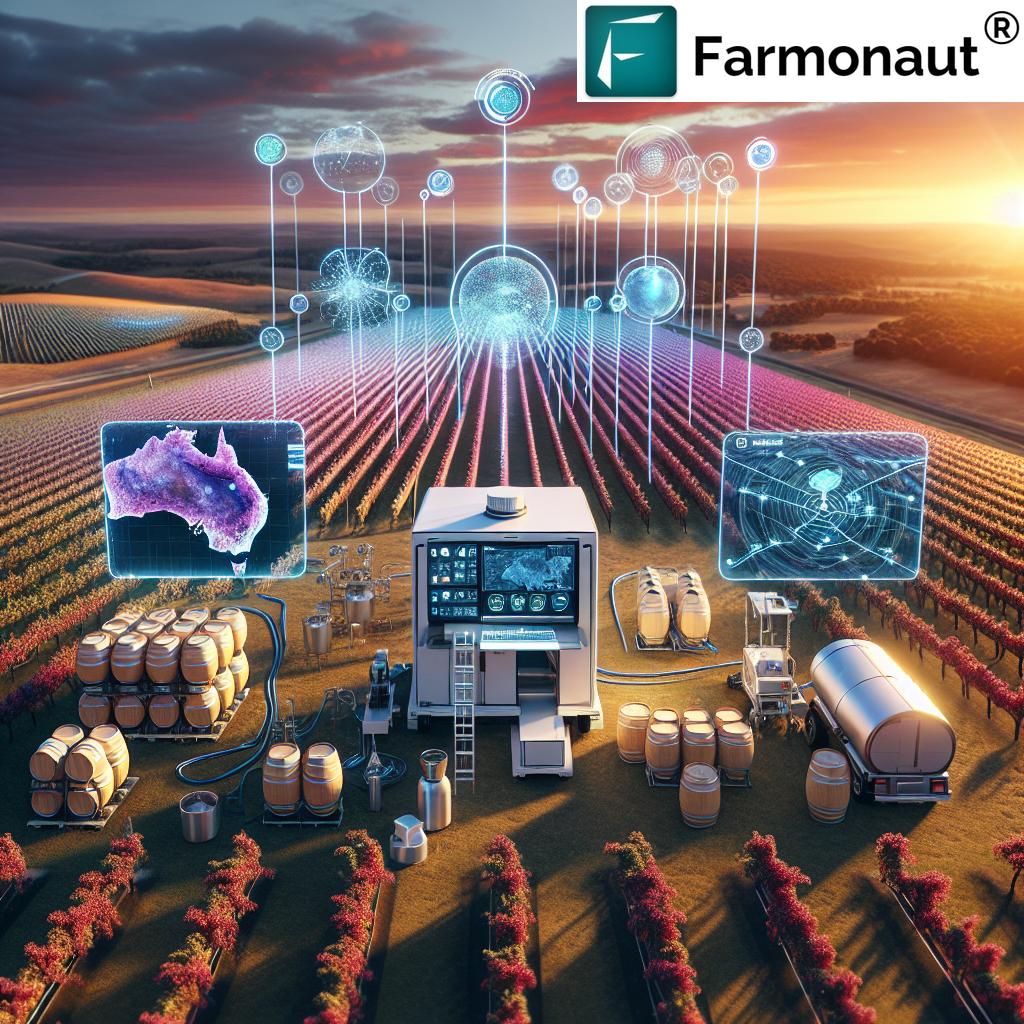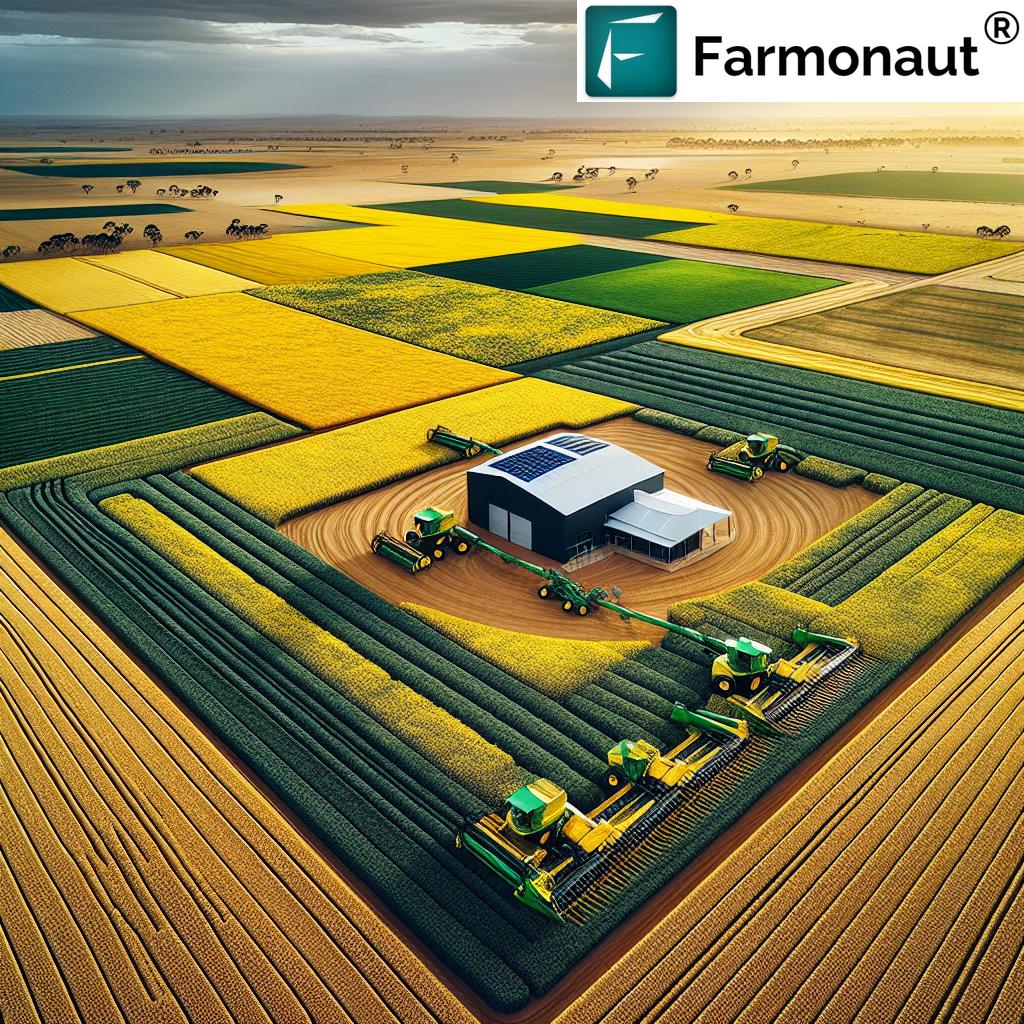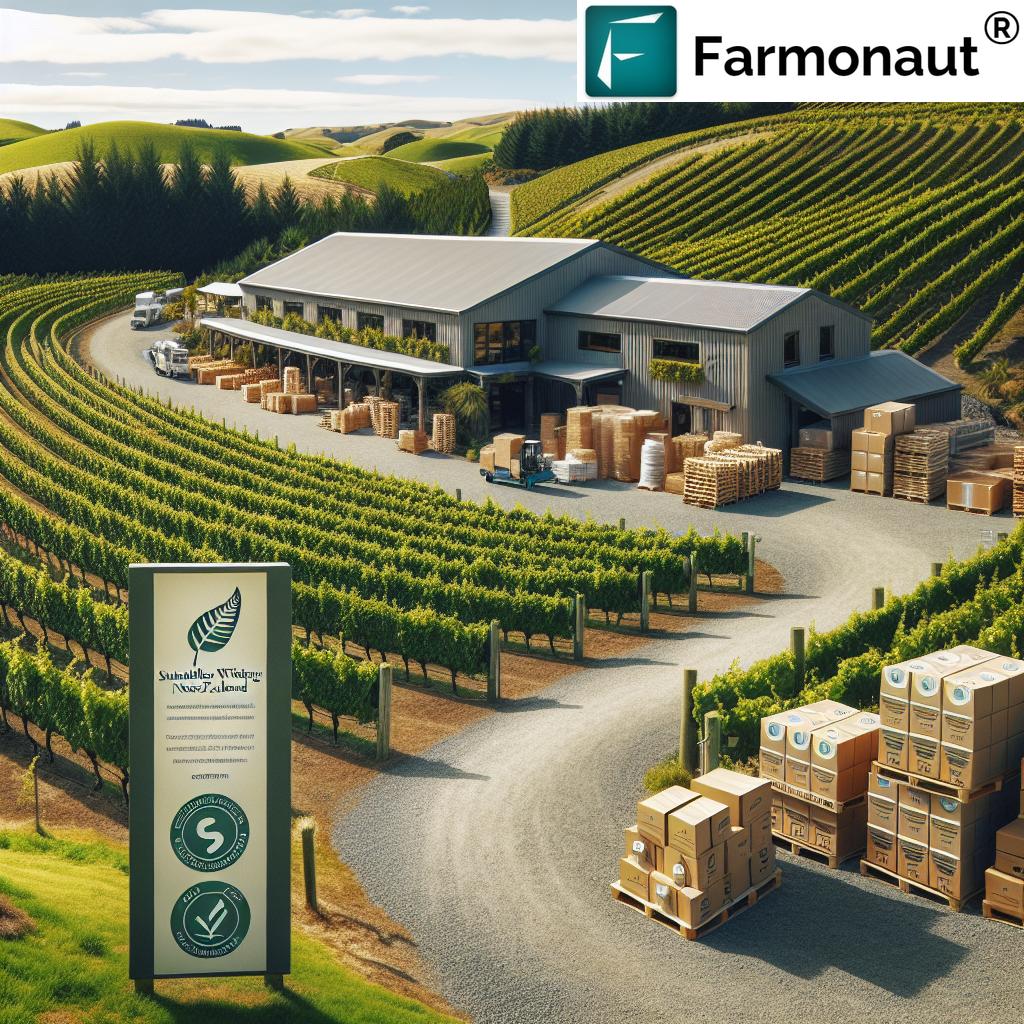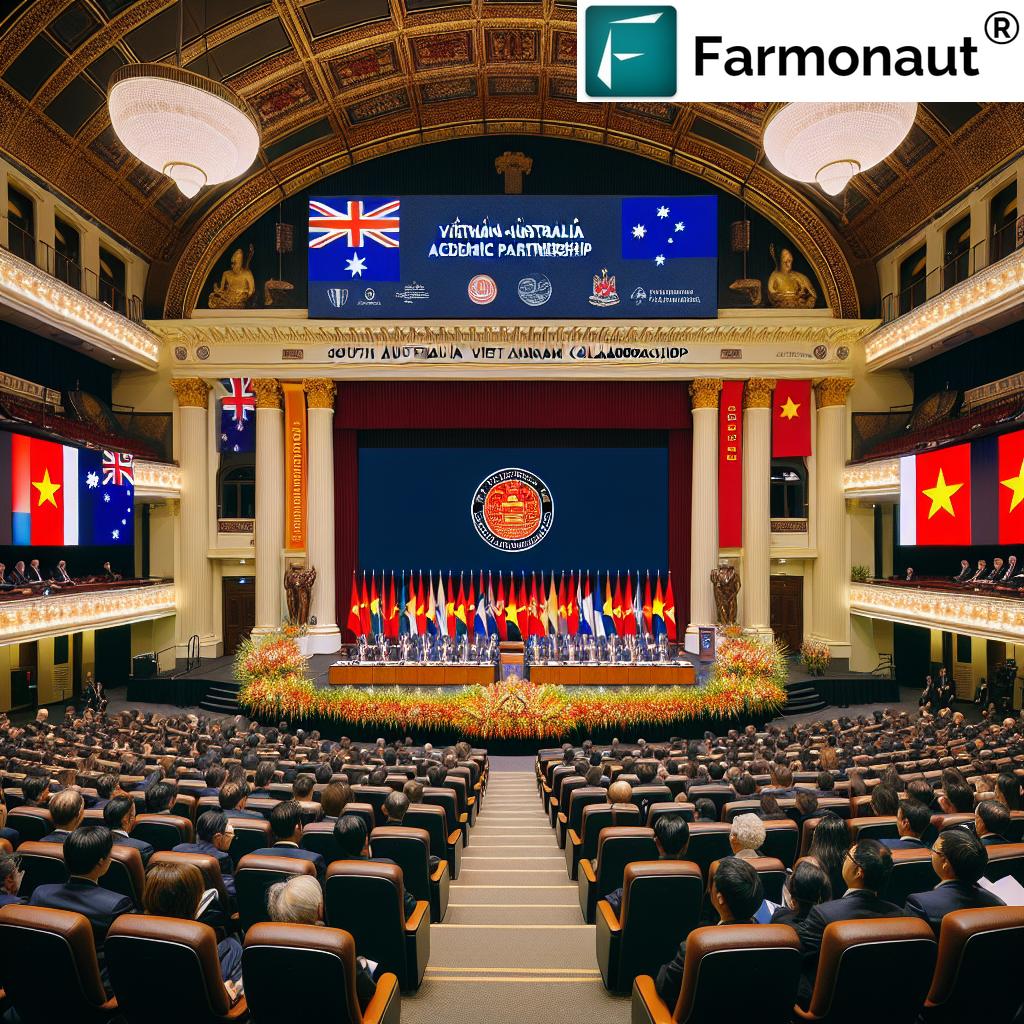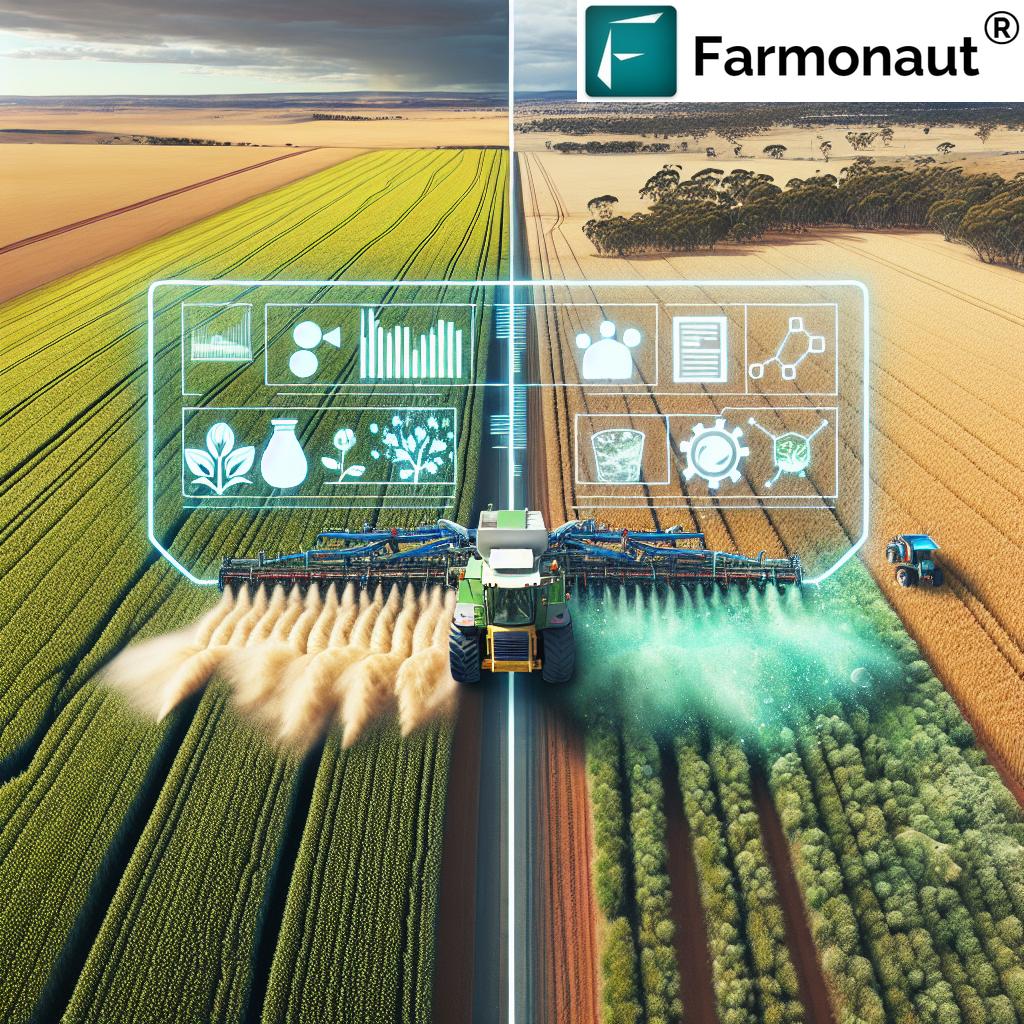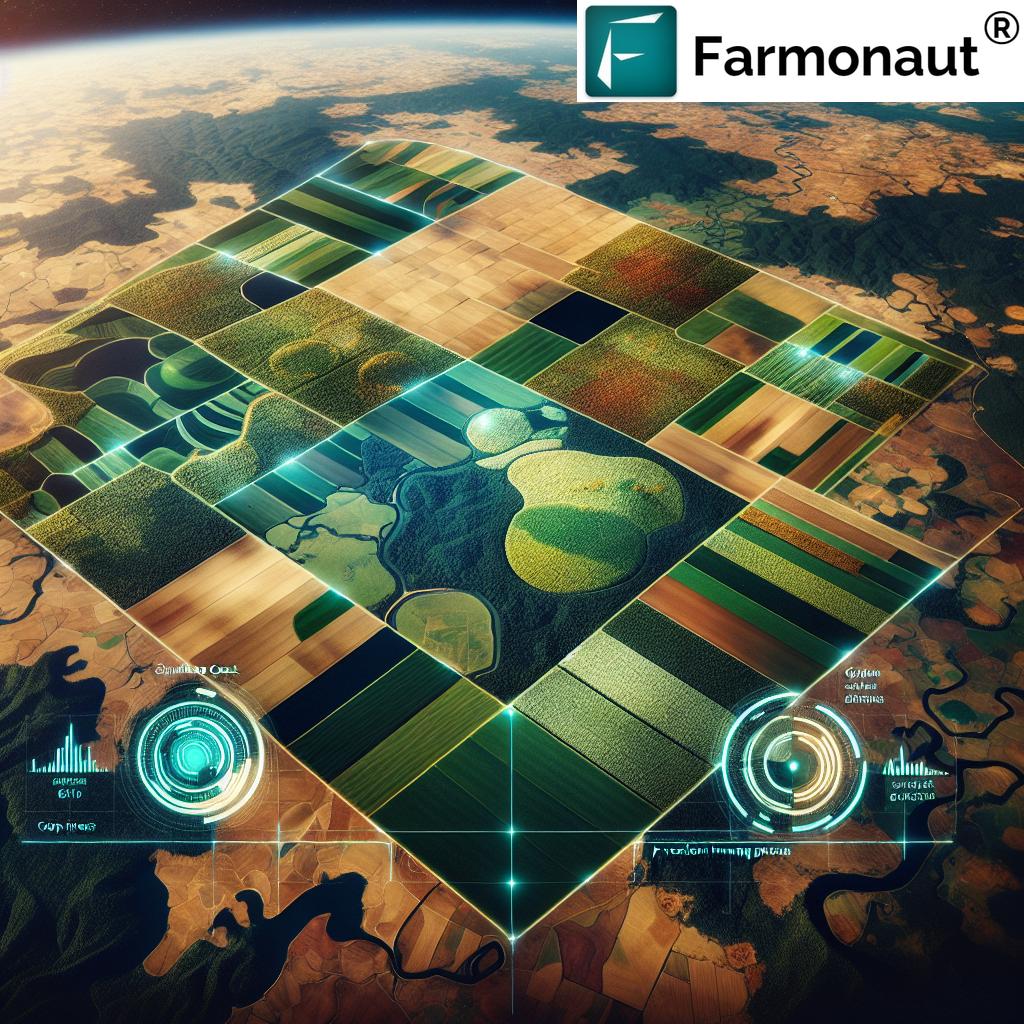Revolutionizing Australian Winemaking: Precision Aeration Techniques for Enhanced Quality and Efficiency
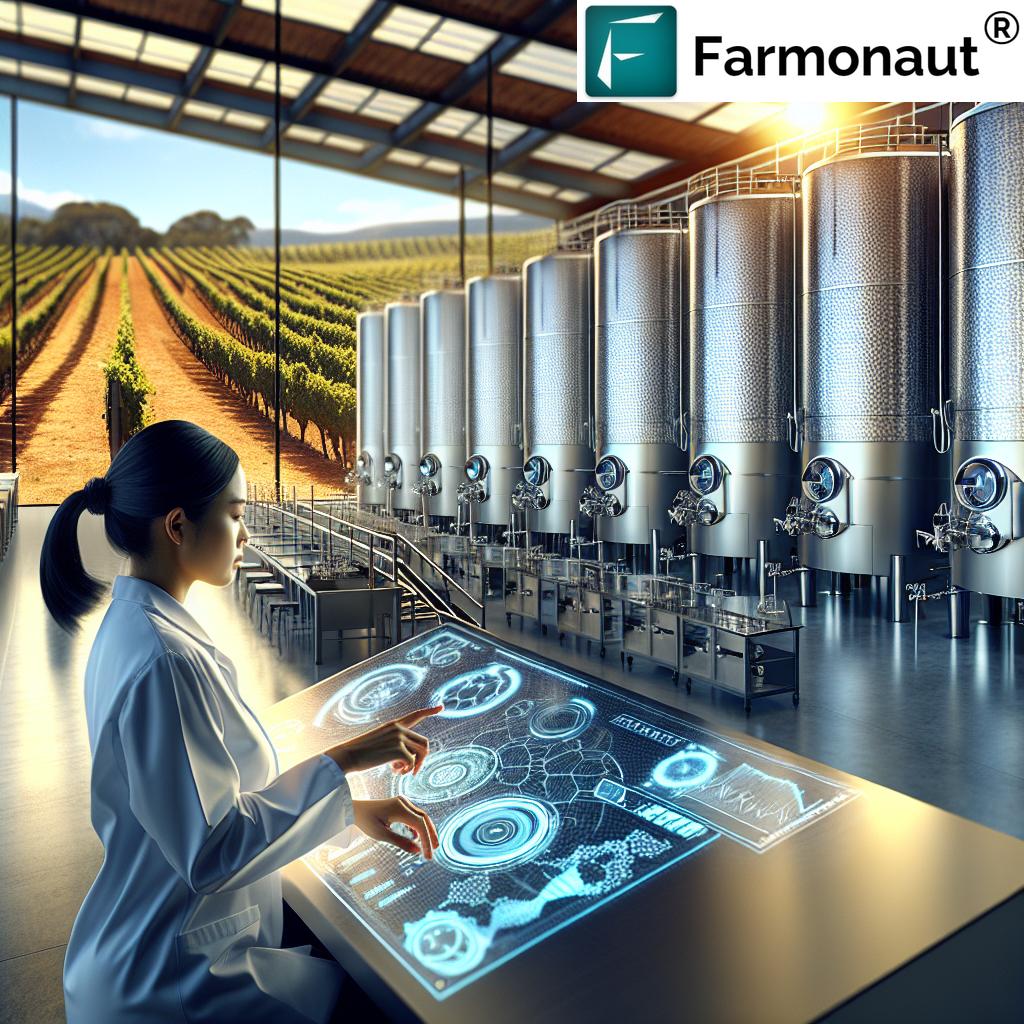
“Precision aeration techniques can significantly impact wine attributes, affecting aroma, colour, and alcohol content in Australian wines.”
In the world of winemaking, Australia has long been recognized for its innovative approaches and commitment to quality. As we delve into the exciting realm of precision aeration techniques, we’re witnessing a revolution in the Australian wine industry that’s set to enhance both quality and efficiency. Our journey through this cutting-edge research will explore how wine aeration techniques and oxygen management in winemaking are reshaping the landscape of Australian wines.
At Farmonaut, we’re passionate about leveraging technology to improve agricultural practices, and while our focus is primarily on crop monitoring and management, we recognize the parallels between vineyard management and broader agricultural innovations. Let’s uncork the secrets of modern winemaking and explore how these advancements are influencing the global wine market, from Asia to Europe and the Americas.
The Science Behind Wine Aeration
Wine aeration is a crucial process in winemaking that involves introducing oxygen to the wine at various stages of production. This process can significantly impact the final product’s taste, aroma, and overall quality. Let’s break down the science behind this fascinating technique:
- Oxidation: When wine is exposed to oxygen, it undergoes chemical reactions that can alter its composition.
- Evaporation: Volatile compounds in the wine can evaporate, potentially enhancing desirable aromas.
- Softening of Tannins: In red wines, aeration can help soften harsh tannins, resulting in a smoother mouthfeel.
Understanding these processes is crucial for winemakers looking to optimize their production methods and achieve specific flavor profiles. As we continue to explore this topic, we’ll see how Australian winemakers are harnessing these principles to revolutionize their craft.
Precision Aeration: A Game-Changer for Australian Wines
Precision aeration techniques have emerged as a game-changer in the Australian wine industry. These methods allow winemakers to control oxygen exposure with unprecedented accuracy, leading to enhanced wine quality and production efficiency. Here’s how precision aeration is making waves:
- Micro-oxygenation: This technique involves introducing tiny, controlled amounts of oxygen during fermentation and aging.
- Macro-oxygenation: Used for larger-scale oxygen introduction, particularly beneficial for red wines.
- Controlled Oxygen Transfer: Advanced systems that monitor and adjust oxygen levels throughout the winemaking process.
These techniques are not only improving wine quality but also contributing to more sustainable winemaking practices. By optimizing oxygen exposure, winemakers can reduce waste and energy consumption, aligning with the growing demand for eco-friendly production methods.
Comparing Red vs White Wine Aeration
The effects of aeration can vary significantly between red and white wines. Let’s explore how these two wine types respond to oxygen exposure:
Red Wine Aeration
- Generally benefits more from aeration due to higher tannin content
- Can develop softer tannins and more complex flavors
- Often requires longer aeration periods
White Wine Aeration
- Typically requires less aeration than red wines
- Can enhance aromatic qualities and reduce sulfur compounds
- Over-aeration may lead to loss of delicate flavors
Australian winemakers are leveraging these differences to craft wines that showcase the best characteristics of each varietal. By fine-tuning aeration techniques for specific grape types and wine styles, they’re able to produce wines that stand out in the global market.
Fermentation Efficiency in Wine Production
Improving fermentation efficiency in wine production is a key focus for Australian winemakers. By optimizing the fermentation process, they can enhance wine quality while reducing production time and costs. Here’s how precision aeration is contributing to improved fermentation efficiency:
- Controlled Yeast Activity: Precise oxygen management helps maintain optimal yeast health and activity.
- Reduced Fermentation Time: Proper aeration can speed up the fermentation process without compromising quality.
- Consistency in Production: Advanced aeration systems ensure consistent results across batches.
These improvements in fermentation efficiency are not only benefiting large-scale producers but also enabling smaller boutique wineries to compete on a global stage. The ability to produce high-quality wines more efficiently is reshaping the Australian wine export market.
Explore Farmonaut’s API for agricultural insights
Sustainable Winemaking Practices
Sustainability is becoming increasingly important in the wine industry, and Australian winemakers are at the forefront of adopting sustainable winemaking practices. Precision aeration techniques play a significant role in this shift towards more environmentally friendly production methods:
- Energy Efficiency: Optimized aeration processes reduce overall energy consumption.
- Water Conservation: Precise control over fermentation reduces water usage in cleaning and processing.
- Waste Reduction: Improved wine quality leads to less product waste and fewer rejected batches.
These sustainable practices not only benefit the environment but also appeal to eco-conscious consumers, potentially opening up new markets for Australian wines.
“Advanced fermentation systems in Australian wineries are improving efficiency while reducing emissions, contributing to sustainable winemaking practices.”
Vineyard Management Technology
Vineyard management technology is evolving rapidly, with precision viticulture techniques becoming increasingly popular among Australian wine producers. While Farmonaut’s focus is on broader agricultural applications, many of the principles we employ in crop monitoring can be adapted for vineyard management:
- Satellite Imagery: Used to monitor vine health and identify potential issues early.
- Soil Moisture Sensors: Help optimize irrigation and improve grape quality.
- Weather Stations: Provide real-time data to inform decision-making throughout the growing season.
These technologies enable winemakers to make data-driven decisions, ultimately leading to better grape quality and more efficient use of resources.
Check out Farmonaut’s API Developer Docs for integration insights
Wine Quality Optimization
Wine quality optimization is at the heart of precision aeration techniques. Australian winemakers are using advanced technologies to fine-tune every aspect of the winemaking process, resulting in wines of exceptional quality. Here’s how aeration contributes to quality optimization:
- Flavor Development: Controlled oxygen exposure can enhance desirable flavors and aromas.
- Color Stability: Proper aeration helps stabilize wine color, particularly in red wines.
- Texture Improvement: Oxygen management can lead to smoother, more balanced wines.
By leveraging these techniques, Australian winemakers are producing wines that consistently rank among the world’s best, further solidifying the country’s reputation as a premier wine-producing region.
Wine Export Market Trends
The global wine market is constantly evolving, and wine export market trends play a crucial role in shaping the strategies of Australian winemakers. Here are some key trends we’re observing:
- Increasing Demand for Premium Wines: Precision aeration techniques are helping Australian producers meet this demand.
- Focus on Sustainability: Eco-friendly production methods are becoming a selling point in international markets.
- Diversification of Export Destinations: Australian wines are finding new markets beyond traditional strongholds.
These trends highlight the importance of innovation and adaptation in the wine industry, areas where Australian producers excel.
Impact of Aeration Intensity on Wine Attributes
The intensity of aeration can significantly impact various wine attributes. Australian researchers are delving deep into understanding these effects:
- Aroma: Different aeration intensities can enhance or subdue specific aromatic compounds.
- Color: Oxygen exposure can stabilize color in red wines but may cause browning in whites if not carefully controlled.
- Alcohol Content: While aeration doesn’t directly affect alcohol content, it can influence perception of alcohol in the final product.
By mastering the art of aeration intensity, Australian winemakers are able to craft wines with precise flavor profiles and sensory characteristics.
Innovative Fermentation Systems
Australian wineries are adopting cutting-edge fermentation systems that incorporate advanced aeration techniques. These systems offer several benefits:
- Automated Oxygen Management: Precise control over oxygen levels throughout fermentation.
- Real-time Monitoring: Continuous data on fermentation progress and wine characteristics.
- Energy Efficiency: Optimized processes that reduce overall energy consumption.
These innovative systems are not only improving wine quality but also contributing to more sustainable and efficient winery operations.
Emissions Reduction in Winery Operations
Sustainability is a key focus for Australian wineries, with many implementing strategies to reduce emissions:
- Energy-efficient Equipment: Including advanced aeration systems that optimize power usage.
- Renewable Energy Adoption: Many wineries are investing in solar and wind power.
- Waste Management: Implementing practices that minimize waste and maximize recycling.
These efforts not only benefit the environment but also improve the industry’s long-term sustainability and appeal to eco-conscious consumers.
The Future of Australian Winemaking
As we look to the future, it’s clear that precision aeration techniques will continue to play a crucial role in shaping the Australian wine industry. Here are some trends we anticipate:
- Integration of AI and Machine Learning: To further optimize aeration processes and wine production.
- Increased Focus on Terroir Expression: Using precision techniques to highlight unique regional characteristics.
- Expansion into New Markets: Leveraging advanced production methods to meet diverse global preferences.
These developments promise to keep Australian wines at the forefront of innovation and quality in the global market.
Comparison of Aeration Techniques in Australian Winemaking
| Aeration Technique | Impact on Red Wine | Impact on White Wine | Fermentation Efficiency (%) | Effect on Wine Aroma (1-10) | Effect on Wine Colour (1-10) | Alcohol Content Impact (%) | Sustainability Score (1-10) | Estimated Cost Efficiency (1-10) |
|---|---|---|---|---|---|---|---|---|
| Micro-oxygenation | High | Moderate | 95 | 9 | 8 | 0.5 | 8 | 7 |
| Macro-oxygenation | Very High | Low | 90 | 7 | 9 | 1.0 | 6 | 8 |
| Precision Aeration Systems | Very High | High | 98 | 10 | 10 | 0.2 | 9 | 9 |
Conclusion
The revolution in Australian winemaking through precision aeration techniques is a testament to the industry’s commitment to innovation and quality. From enhancing wine attributes to improving sustainability, these advanced methods are shaping the future of wine production not just in Australia, but globally.
As we’ve explored, the careful management of oxygen throughout the winemaking process can lead to significant improvements in wine quality, production efficiency, and sustainability. Australian winemakers are at the forefront of this revolution, leveraging cutting-edge technology and research to produce wines that stand out in the competitive global market.
While Farmonaut’s primary focus is on broader agricultural applications, many of the principles and technologies we employ in crop monitoring and management can be adapted and applied to vineyard management. The use of satellite imagery, AI-driven insights, and data analytics are just a few examples of how agricultural technology can contribute to the advancement of winemaking practices.
As the industry continues to evolve, we can expect to see even more exciting developments in precision viticulture and winemaking. The future of Australian wine looks bright, with a perfect blend of tradition and innovation promising to deliver exceptional wines for years to come.
FAQ Section
Q: How does precision aeration improve wine quality?
A: Precision aeration techniques allow winemakers to control oxygen exposure throughout the winemaking process, enhancing flavor development, color stability, and overall wine structure.
Q: Are these techniques only used for red wines?
A: While red wines often benefit more from aeration due to their tannin content, precision aeration techniques can also be beneficial for white wines, particularly in enhancing aromatic qualities.
Q: How do precision aeration techniques contribute to sustainability in winemaking?
A: These techniques improve fermentation efficiency, reduce energy consumption, and minimize waste, all of which contribute to more sustainable winemaking practices.
Q: Can small wineries benefit from these advanced aeration systems?
A: Yes, while some systems may require significant investment, there are scalable solutions that can benefit wineries of all sizes, improving quality and efficiency.
Q: How is technology changing vineyard management in Australia?
A: Advanced technologies like satellite imagery, soil moisture sensors, and weather stations are enabling more precise vineyard management, leading to improved grape quality and resource efficiency.
